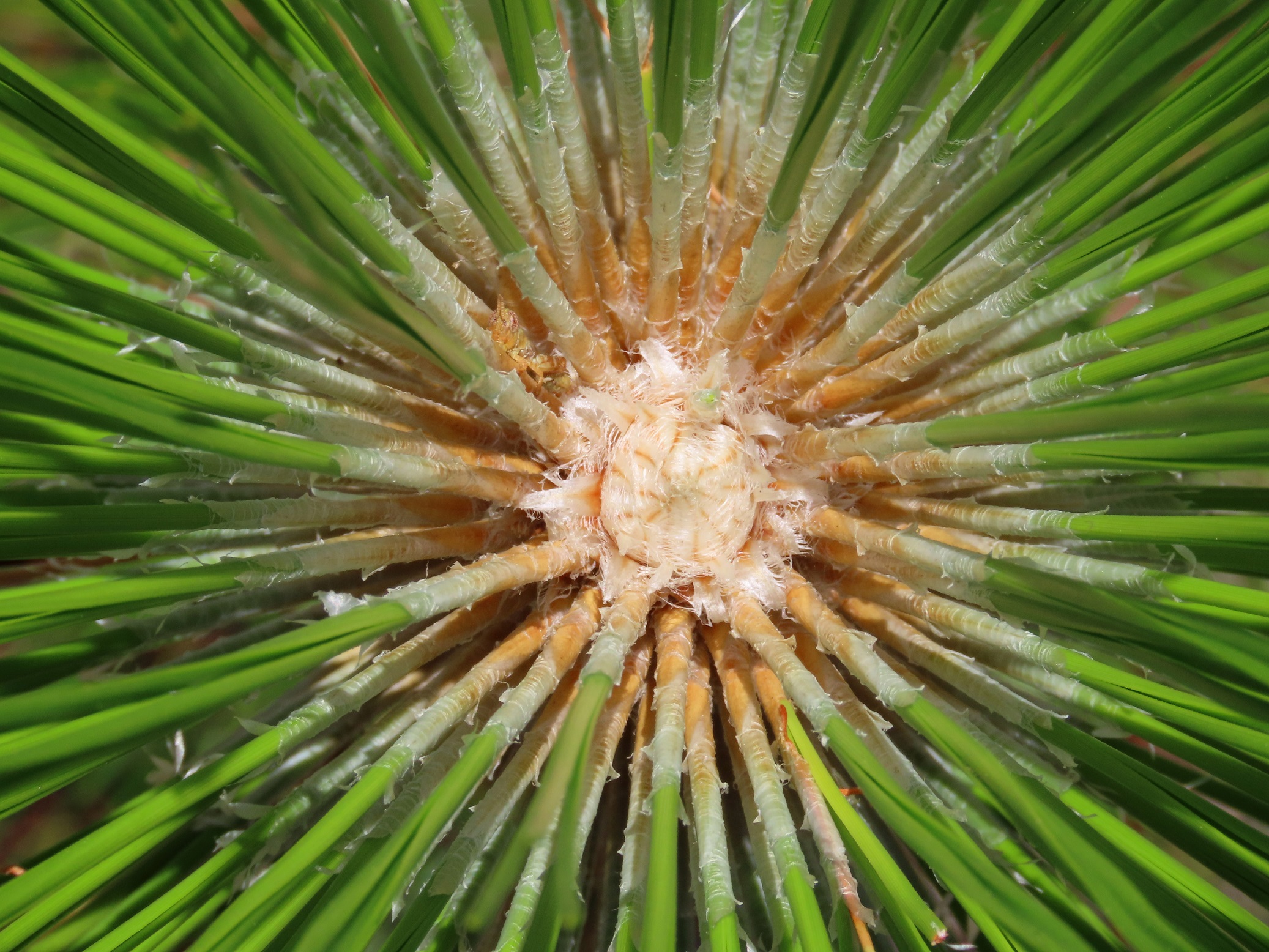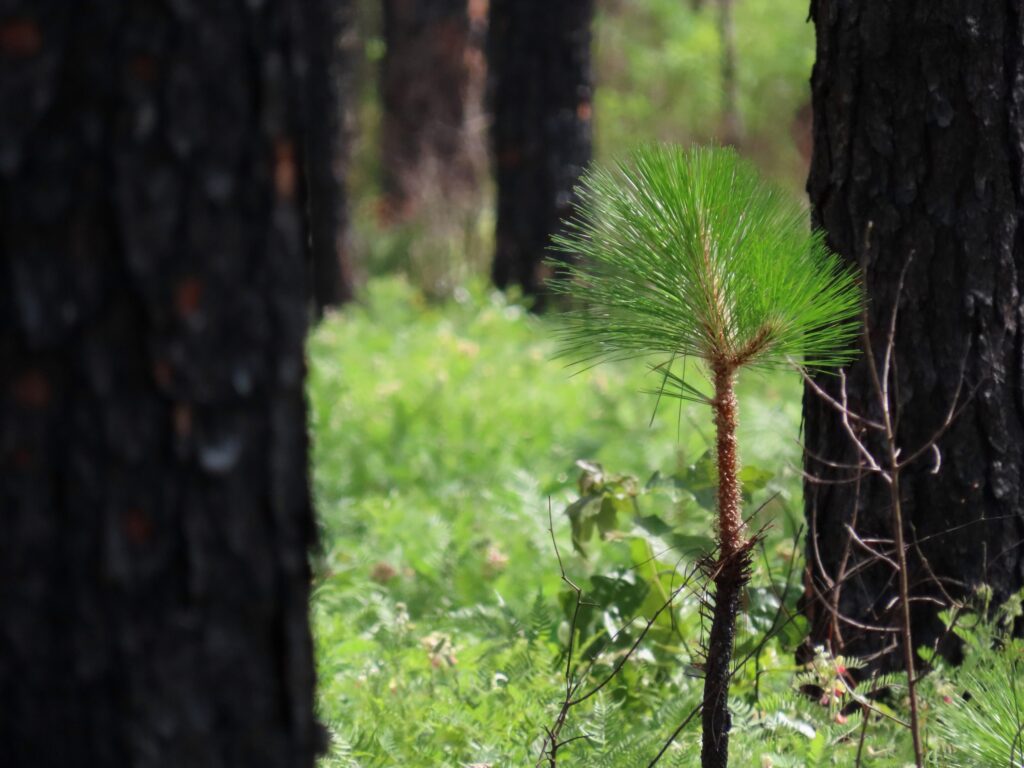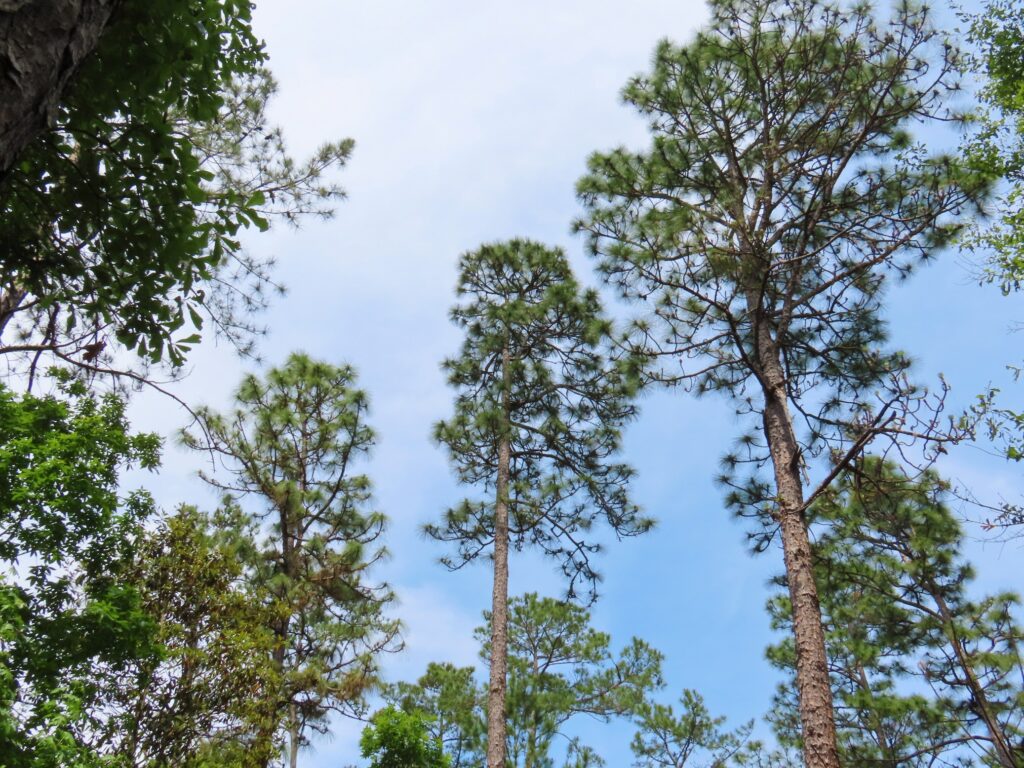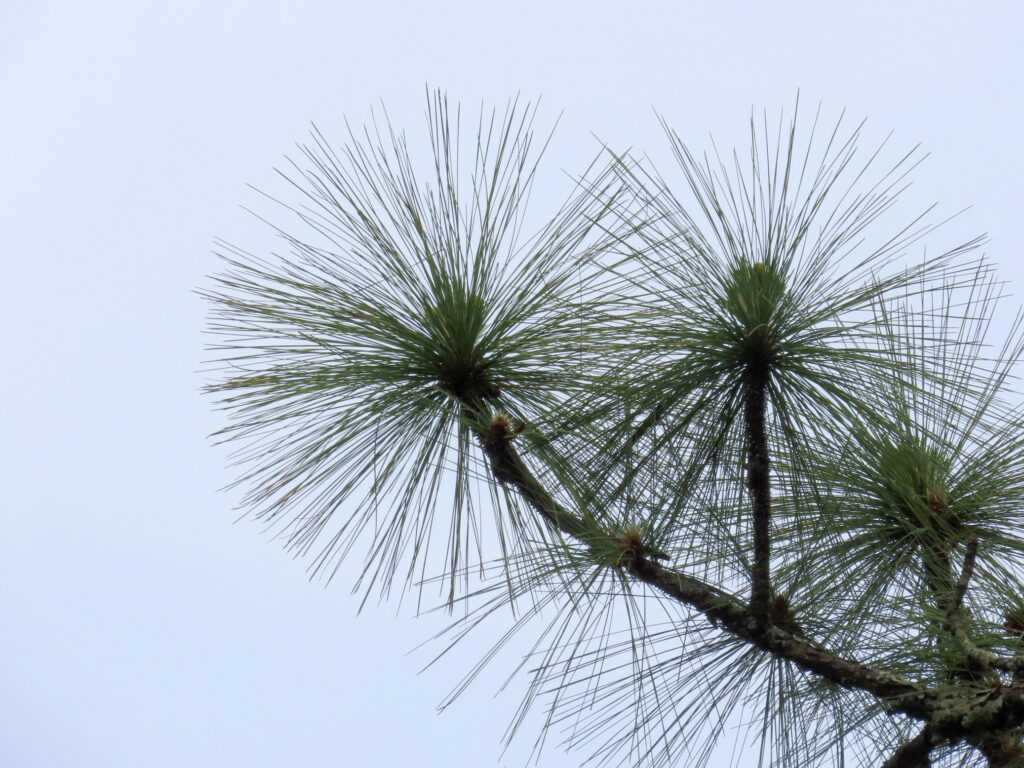



This week for Flora and Fauna Friday it’s the mighty Pine that dominated the pre-colonial Southeast, the Longleaf Pine (Pinus palustris).
The Longleaf Pine is an ecoregion defining tree which once reigned in the coastal plain from Alabama through North Carolina. However, by the mid-twentieth century its kingdom had been hacked to pieces and its numbers whittled to just a small fraction of what it once was. Longleaf Pine is a long-lived pine with a broad crown, stout arrow-straight trunk, and relatively dense wood for a pine. This pine has long emerald-green needles which burst forth from thick spiny stems into globes of dangling threads. Between these its huge cones perch in the breeze, spilling winged seeds to the forest floor. Beneath the ground it extends a deep twining bed of roots, anchoring it to the sandy soils it inhabits. Longleaf Pine at a glance resembles both the ubiquitous Loblolly Pine (P. taeda) and especially the more southern Slash Pine (P. elliottii) but when more closely examined is easily recognized by its needles of unmatched length, thick stems, and massive cones, which dwarf those of Loblolly.
The Longleaf Pine was once found extensively throughout the Lowcountry and Sandhills of South Carolina. Outside of river valleys and swamps, it was likely the dominant tree throughout the Lowcountry. Great savannahs stretched for miles on end with a sea of grasses and shrubs sheltered beneath a cloud-like canopy of Longleaf Pines. This open canopy and grassy forest floor were maintained by periodic fires, set naturally by lightning strikes or intentionally by Native Americans. Longleaf Pine was built for fire. Its bark is thick and corky and its stems finger-thick even at their narrowest, insulating it from the heat of even a summer blaze. Young trees grow like a grass on the ground, pumping their energy into building an expansive root system and storing energy so they can quickly shoot up a spindly trunk above the reach of the average fire. Their adaptation to fire also came hand-in-hand with their tolerance for drought, as dry soils were often more at risk for fire. Their deep and expansive root system allowed them find water and nutrients on even the deepest, driest, most barren sand hills of the midlands and a refined tolerance for heat allowed them to reduce their water uptake dramatically in periods of prolong drought. These traits coupled with their longer lifespan allowed them to eventually dominate the Southeast and convert the land to savannahs. As the sun raged, fires blazed, and droughts persisted they were the only canopy tree that could survive in many places. Beneath their boughs a rich and diverse fire kindled landscape developed full of endemic species of wildflowers, grasses, birds, reptiles, and insects that could survive nowhere else.
During the European colonization of the Southeast, these vast savannahs were logged for their timber and the more arable lands converted to farms and pastures. Some Longleaf Pine groves were continuously maintained for the production of pine resin, which was converted into naval stores. Quickly the Longleaf Pine forests became fragmented and great fires no longer carried for miles on end. However, many areas were still intentionally burned by European Americans to improve cattle forage and hunting. The pattern of fragmentation and conversion continued to worsen. In the 1930s, large scale fire suppression was widely implement across the country and the few intact Longleaf Pine ecosystems suffered greatly for it. For over fifty years, fire suppression wreaked havoc on these sensitive fire-dependent ecosystems. However, modern foresters and ecologists have re-embraced fire on the landscape and coordinated efforts by federal, state, and nonprofit entities are well on their way to returning Longleaf Pine back to a considerable portion of the southeastern landscape.